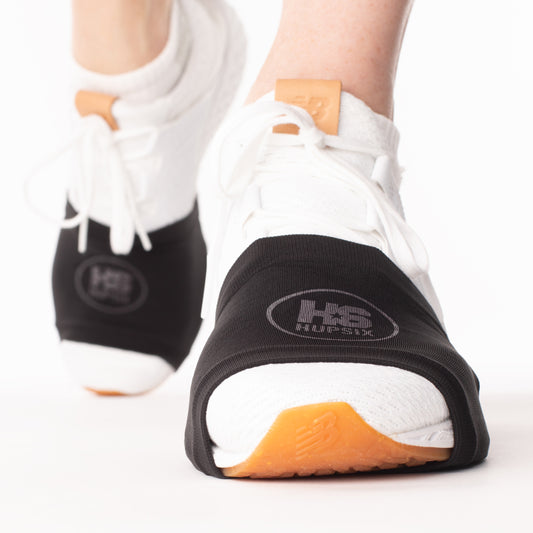
Is Skateboarding Good Cardio?
Quick Answer: Yes — skateboarding can count as cardio, but only if your heart rate stays high enough for long enough. Experienced skaters can reach the right zones, but casual sessions usually don’t. Consistently getting your heart rate into the vigorous zones is the difference between a cardio activity and cardio training.
Is Skateboarding Good Cardio?
Here’s what our data shows. We tested it with a Garmin HRM-Pro Plus chest-strap to measure how much time the body actually spends in moderate and vigorous zones — the ones that matter for heart adaptation and endurance.
The Skate Test
We wanted to see how skateboarding stacks up in terms of heart-rate zones, so we ran a simple test. Nick, 31, an experienced skateboarder, wore a Garmin chest strap for two 30-minute sessions: one skateboarding in desert heat, and one guided HupSix class.
-
Skateboarding: 16 vigorous + 3 moderate = 35 equivalent minutes
- HupSix: 20 vigorous + 6 moderate = 46 equivalent minutes
Even with desert heat raising his heart rate through temperature stress — not true cardiovascular work — the structured class came out ahead, delivering 31 percent more effective cardio in the same time. That’s not a knock on skating; it’s the difference between an activity and a training system. HupSix keeps your heart in the target zones long enough to build measurable endurance and stronger cardiovascular function.
Perceived Effort vs Actual Effect
Skateboarding felt harder because it’s stop-and-go and skill-heavy. HupSix worked better because it’s structured. Each class moves through six rounds: learn, practice, then go full-out to music that sets the pace. There’s no coasting. The cues and beat keep you in rhythm so your heart rate stays where improvement happens. That’s why Nick logged more cardio minutes even though the workout felt smoother.
Why Structure Wins
Structured intervals drive bigger gains in less time. That’s what the Norwegian 4×4 method and Dr. Ben Levine’s research both show — consistent bursts of vigorous work can remodel a stiff heart toward stronger heart function. HupSix follows the same logic. Each 30-minute class combines moderate and vigorous rounds that add up to ≈ 40–50 minutes of weekly cardio credit when tracked with a chest-strap.
What Studies Say About Skateboarding
- Adult skatepark study (2020): average ≈ 73 % max HR, ~20 minutes per hour in moderate zone.
- Competitive skaters (2024 review): elite athletes hit cardio goals; recreational skaters don’t sustain intensity long enough.
So yes, skateboarding can build endurance — but without structure, most sessions fall short of the zone time your heart needs to adapt.
How to Turn Skating Into Cardio
You can make it real training with one tweak — structure. Try a simple version of the 4×4:
- Pick a 4-minute song.
- Skate hard for the full track.
- Rest or roll easy for 3 minutes.
- Repeat 4 times.
That’s 16 vigorous minutes — double credit on your weekly scoreboard (vigorous minutes count double).
The Skill Gap
Nick logged cardio because he’s skilled. Beginners spend most of their time balancing, not pushing. That’s what separates HupSix from skill-based sports — you get effective cardio on day one. The moves are easy to follow but keep your whole body engaged. Music keeps you moving, and the patented gear adds light resistance so your effort stays honest. Half an hour, big results — no learning curve.
Why This Matters
Cardio drives the endurance and energy that carry you through every other activity. Strength and skill are great, but cardiorespiratory fitness is what sustains you when fatigue hits. That’s why every HupSix class is built around vigorous minutes — the ones that make your heart stronger and more efficient.
Activity vs Training
Skateboarding is movement; HupSix is training. Both are fun, but only one keeps your heart in the right zones long enough to build endurance you can use anywhere — skating, sports, or everyday life. One 30-minute HupSix class typically delivers 40–50 zone minutes, improving endurance, coordination, and reaction time together. That’s how you build an athletic heart.
Get the Gear
Try HupSix — patented gear with a lifetime guarantee, 30-day refund, and 12-month prorated return.


